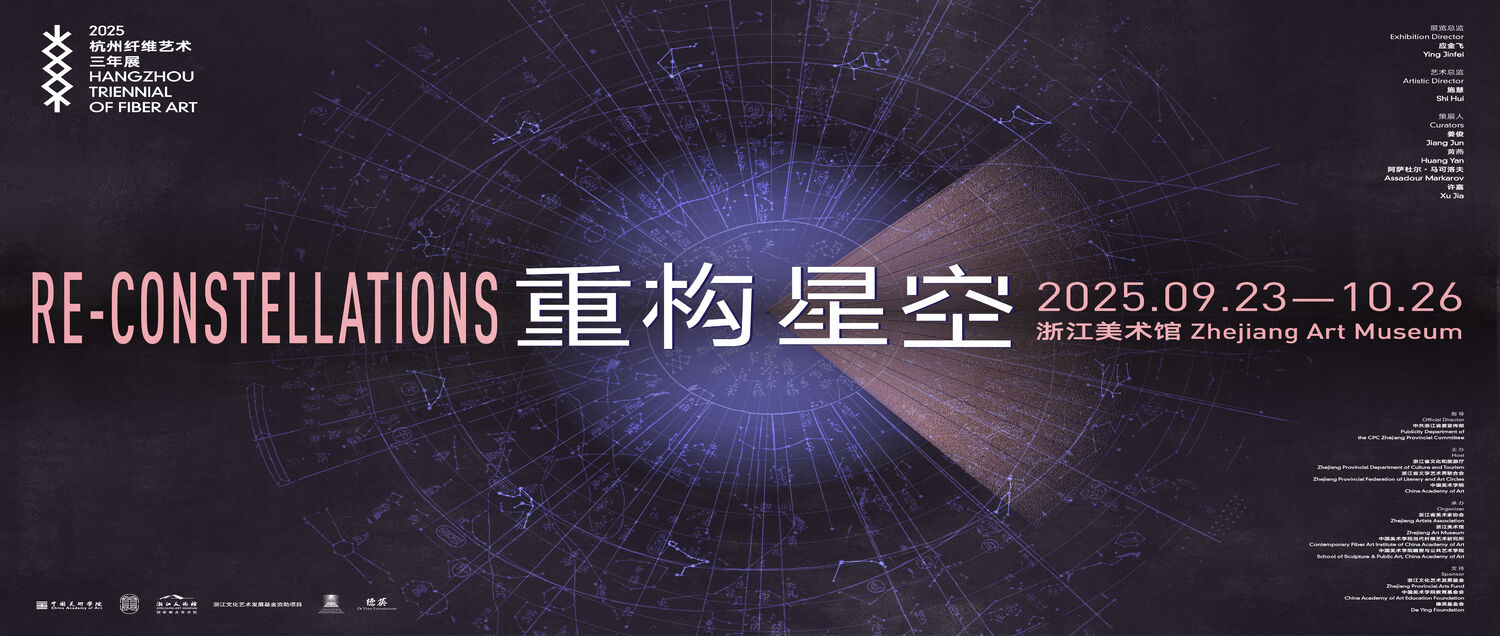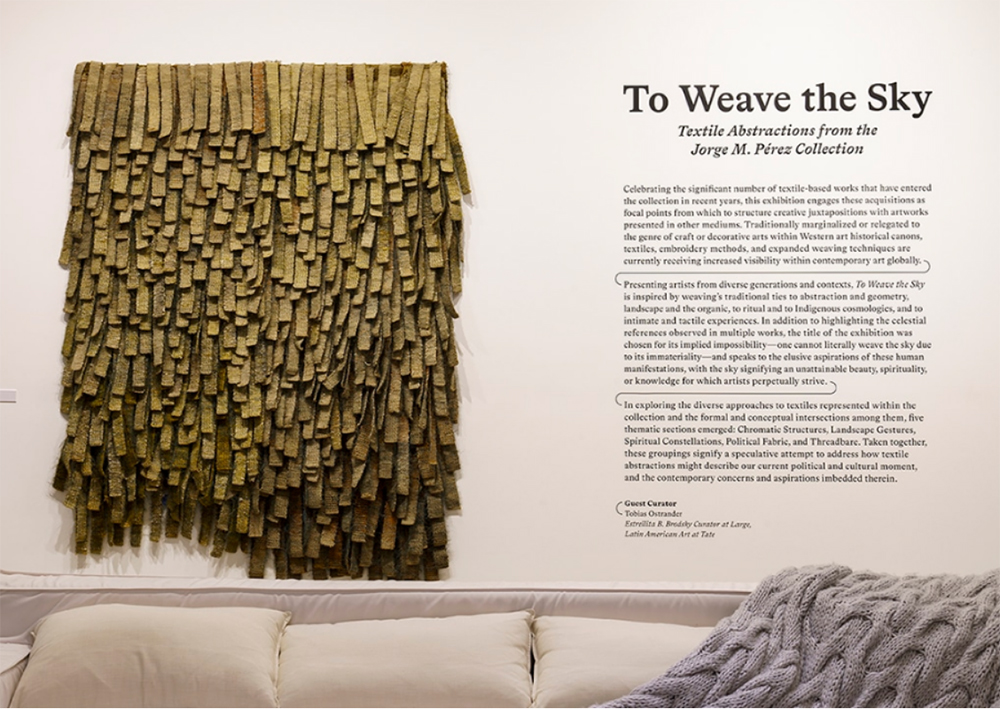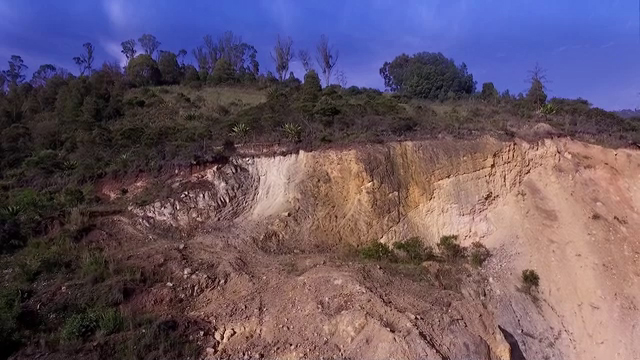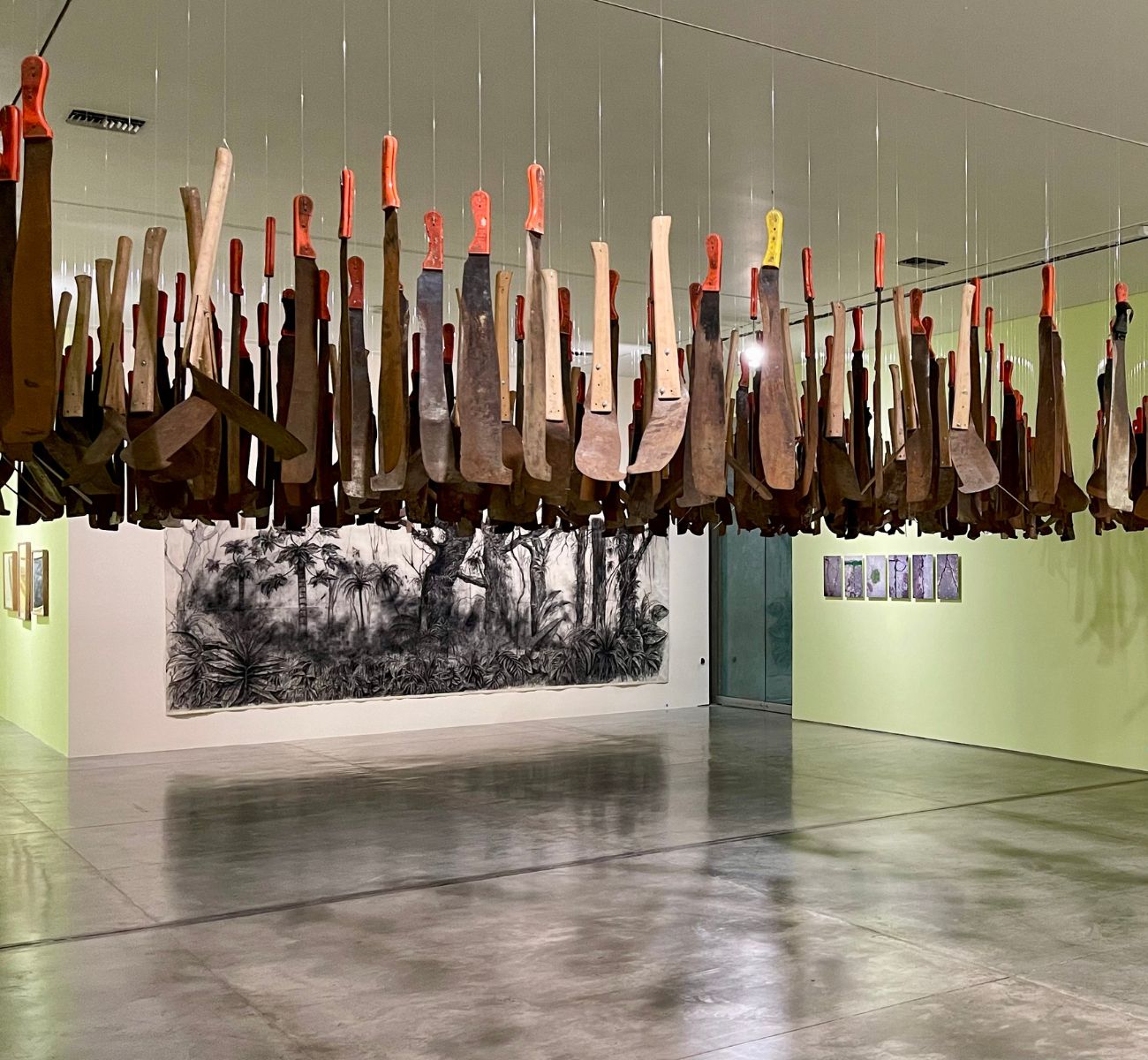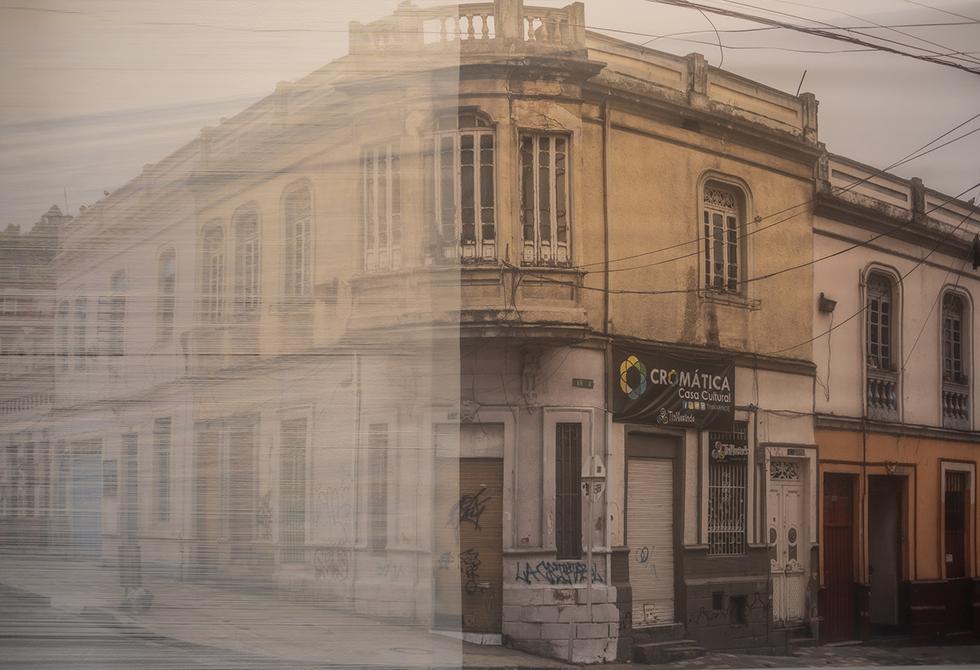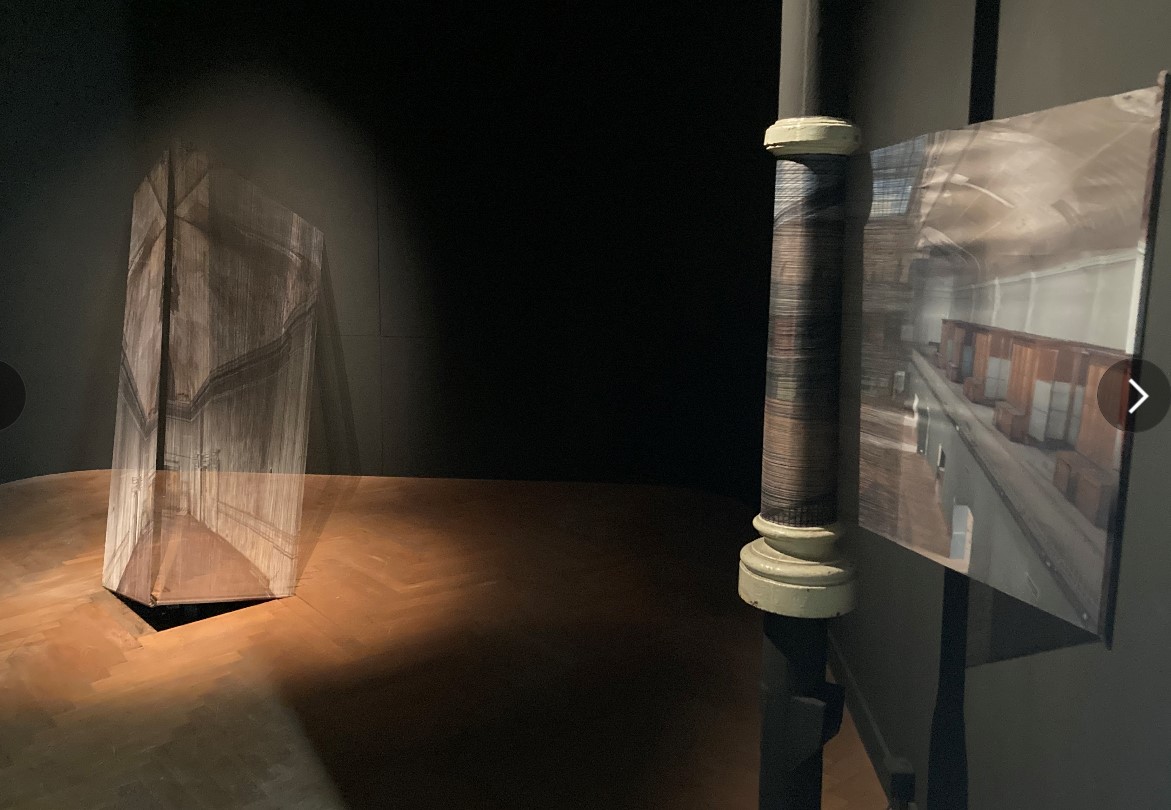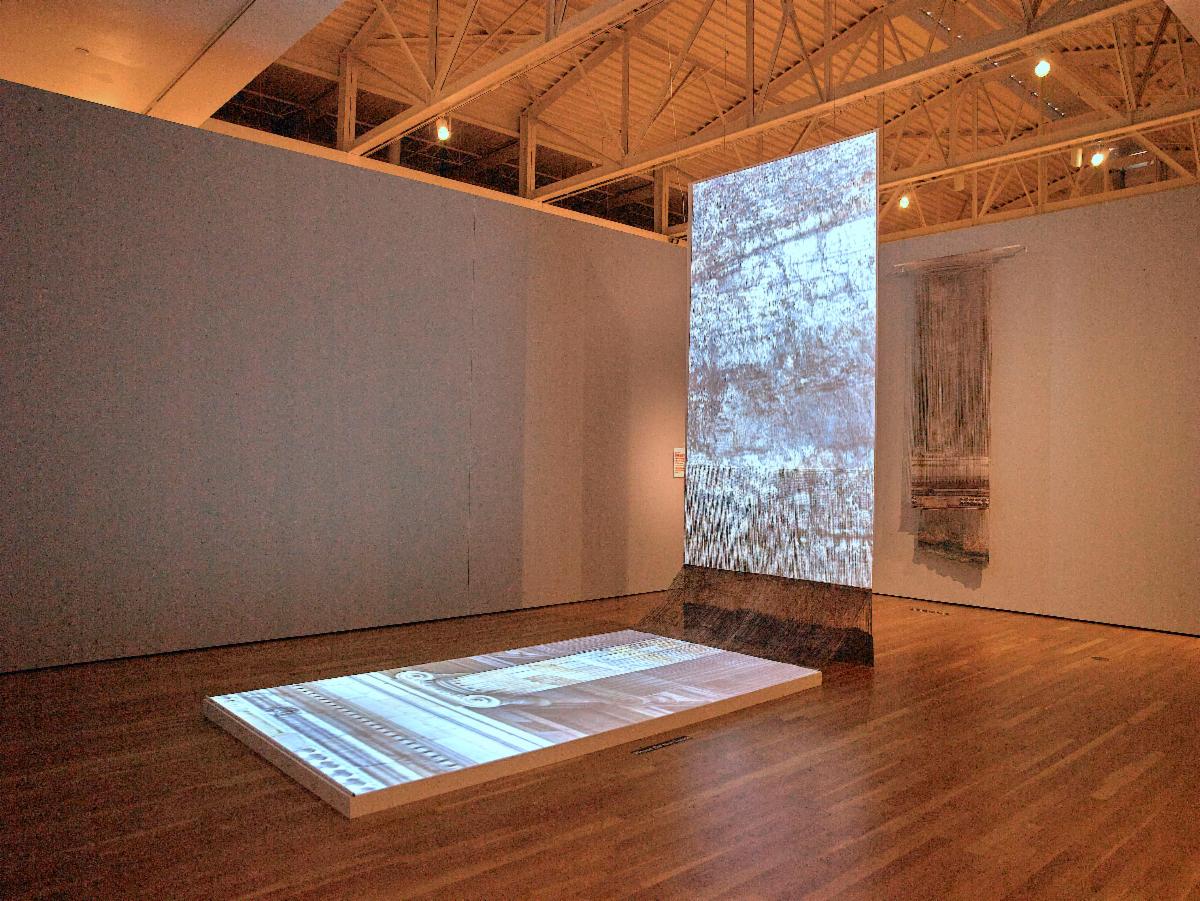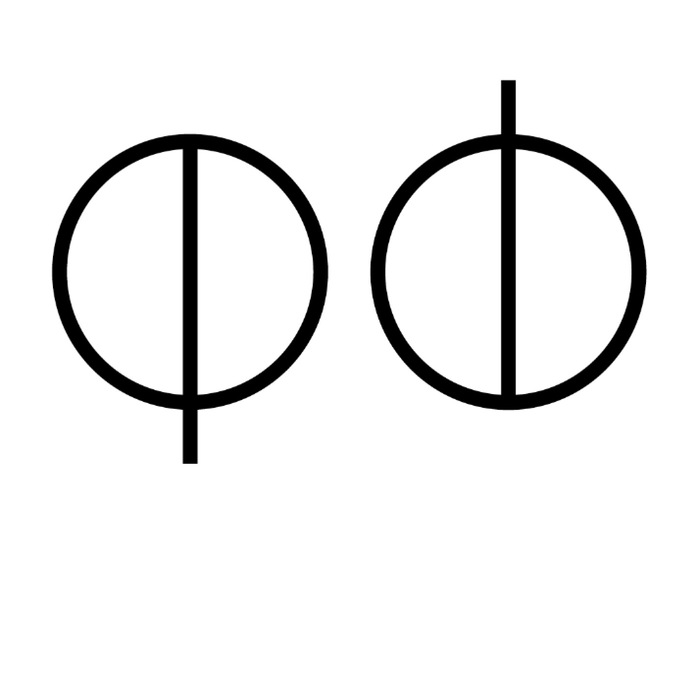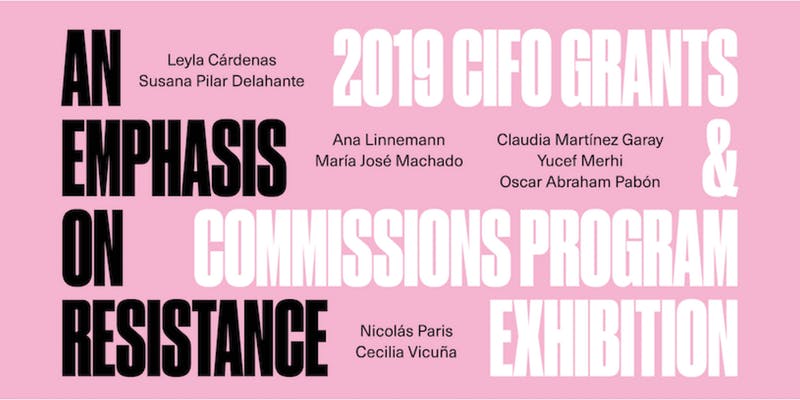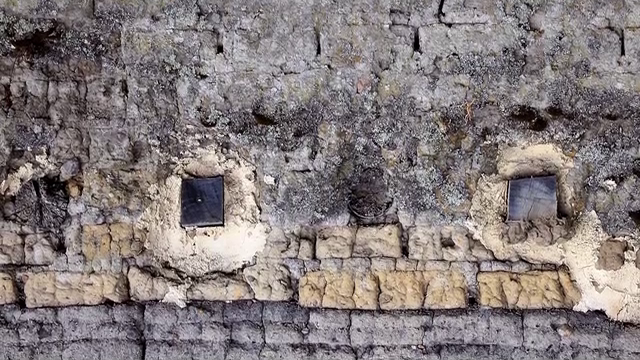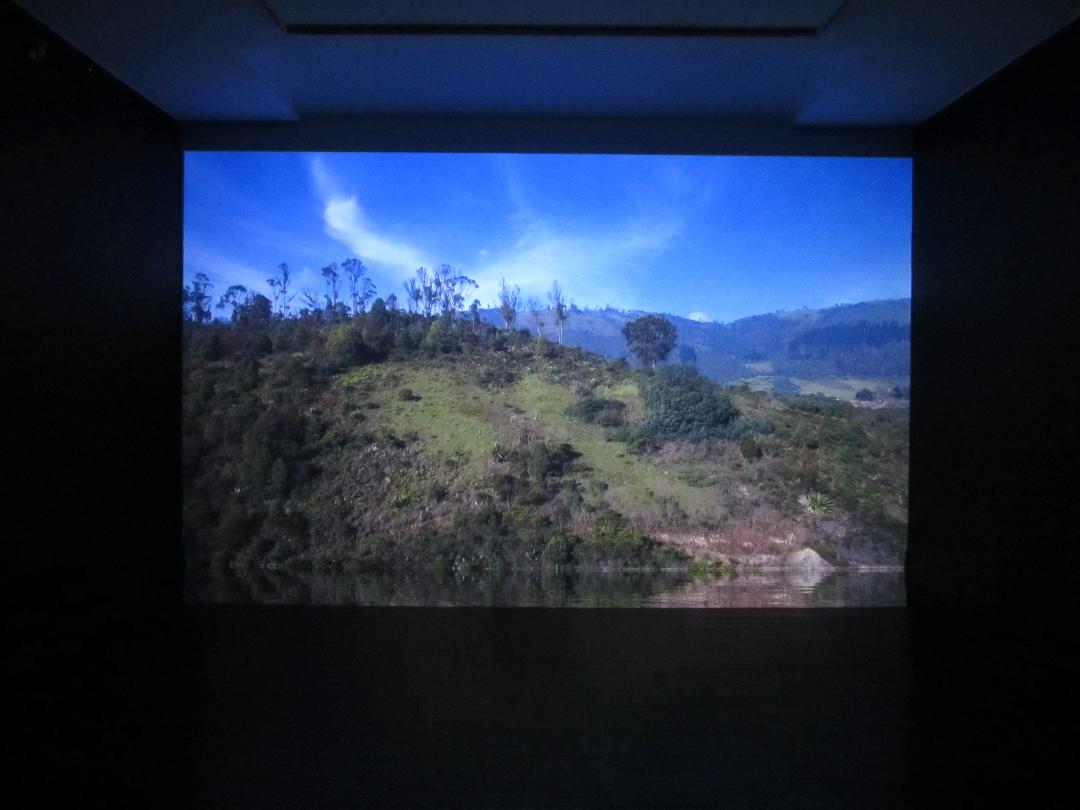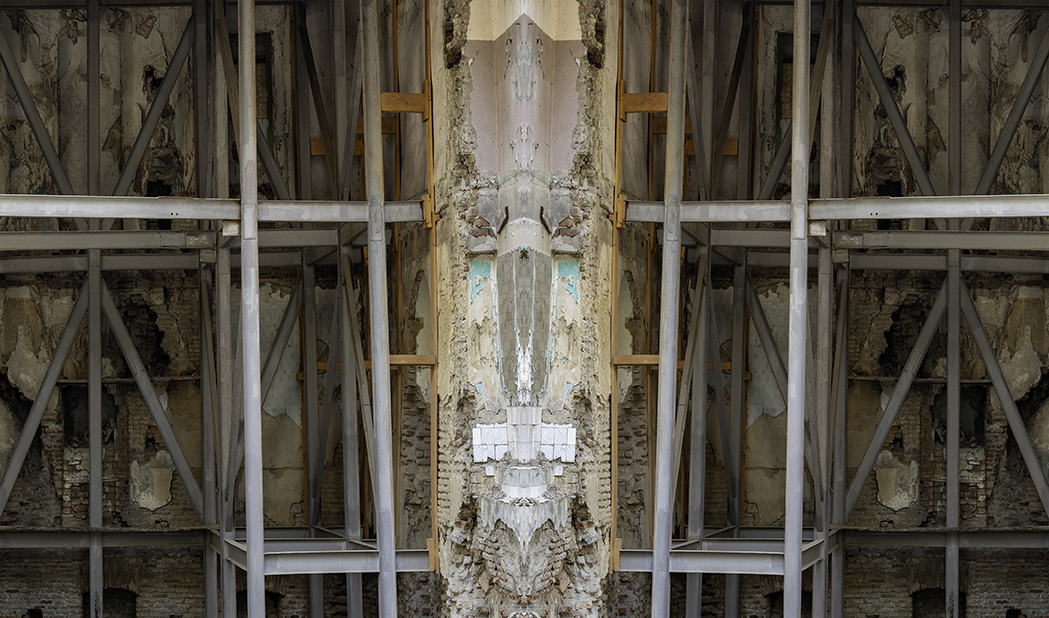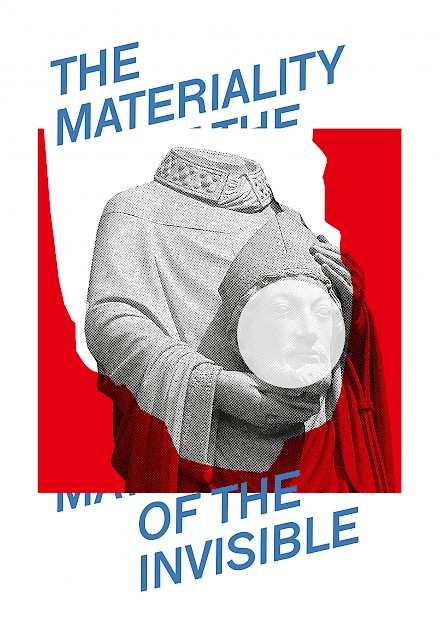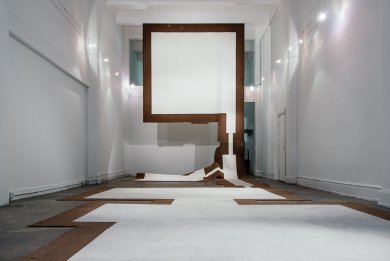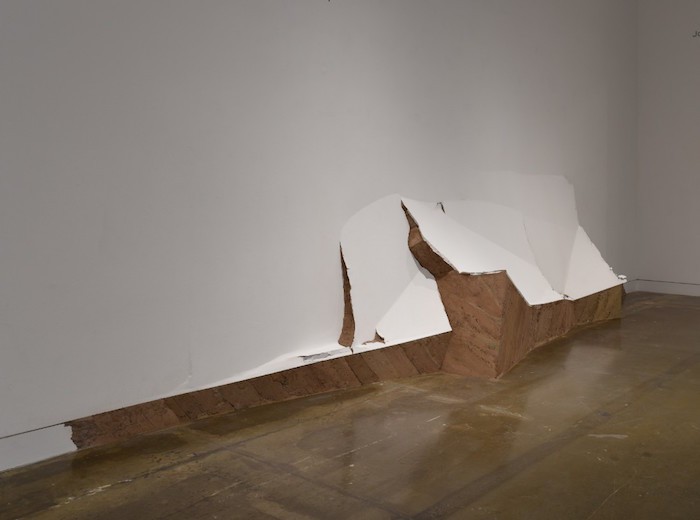Atelier néerlandais
As we move deeper in time:persistent landscapes
exposition de videos sous le commissariat de Arie Amaya-Akkermans. Avec des oeuvres de Gregory Buchakjian & Valérie Cachard / Leyla Cárdenas / Huniti Goldox / Lamia Joreige / Mudassir Sheikh
The concept of ‘deep time' in archaeology is as old as the idea of antiquity, born in the 1860s,
but it has become widespread today in ecology and landscape archaeology, due to the impact of
GIS (geographical information systems), and LiDAR images (light detection and ranging),
identifying previously unknown features of archaeological sites, using a combination of archival
and public domain images and artificial intelligence. In landscape ecology, we hear often that
due to the ‘time depth available from the archaeological record', long-term processes can be
studied at a variety of temporal and spatial scales. But what exactly archaeologists mean by
‘time depth' is far less understood. Chilean archaeologist Cristián Simonetti wrote in 2014 that,
as we move deeper in time, we do not know with precision which direction is implied in this
depth: Is it running downwards, moving backwards, going up vertically, or moving forward?
The passage of time is well conceptualized in stratigraphy as a vertical column, but does this
time column move from top to bottom or the other way around? What happens when the time is
out of joint, and the layers become inverted, or suddenly go missing? The video screening
series is inspired by Colombian artist Leyla Cárdenas' video ‘Interpretation of Deep Time, First
Attempt' (2017) that articulates time as a multidirectional function of the real, physical space. In
the video, the upside down view of a rammed earth wall in the outskirts of Bogotá, is a physical
stratigraphy of time, not simply as a result of erosion, but of spatial and environmental violence.
The traces of human violence and destruction now have geological qualities that have left
permanent marks in the landscape. For Cárdenas, the wounded landscape is not simply a site
of damage, but also a historical and political condition of disorientation that unmakes any simple
passage between past and future.
In the series, “As We Move Deeper in Time: Persistent Landscapes”, we will be looking at video
practices in conversation with Cárdenas, that examine the problem of directionality in time, but
not in the abstraction of linear or metrical time, but rather, embedded in complex assemblages
between nature, culture, history and time, with a particular eye on postcolonial landscapes.
Either landscapes that stand for arenas of reflection for the experience of political violence, or
landscapes that themselves have become rapidly changed by aggressive transformations. In his
book, “Making Time: The Archaeology of Time Revisited” (2021), Gavin Lucas wrote, partially in
response to Simonetti, that movement in time is not only chaotic and unpredictable, but it can
also become suddenly multidirectional, pushing in different directions at the same time,
stretching temporality, and sometimes suspending it or collapsing it. Nature becomes a site of
tension, paradox and discontinuity....
Exhibiting in Tirana these reflections about political violence, either inflicted on the landscape
directly, or re-interpreted through the natural sublime, anchors the question of time depth in a
city undergoing brutal social, economic and political transformations, and which might become
eventually not only unrecognizable, but also unrememberable. The ability of the moving image
to use time as a physical force and sculpt it, even if only temporarily, connects history with
non-human elements as a continuous assemblage of materials, archives and present ruins.
With a greatly expanded notion of historical time, inherited from archaeology, the distant past of
nature might reappear in relative proximity to the political present, and crucially overlap.
Simonetti has called this process, ‘feeling forward into the past': “Concepts of time are not
abstract entities, fixedly stored in the mind, but sentient acts of conceptualization that depend on
the dynamic field of forces in which things and people become entangled.”
To Weave the Sky: Textile Abstractions from the Jorge M. Pérez Collection
Exposition d'oeuvres textiles issues de la collection de Jorge M. Perez
Des choses qui sont parfois et accidentellement vraies
exposition au 109 | Pôle de cultures contemporaines
Curator : Nathalie Amae, directrice artistique
Second volet du projet « Le monde est tout ce qui est" présenté en 2022, axé ici sur sa dimension cosmogonique.
La buena vida, collection de la Banco de Republica
commissariat de Emiliano Valdés, Ana Ruiz etCristina Vasco
devolverse
exposition personnelle
plus d' information
Manifesto of Fragility
commissaires Sam Bardaouil et Till Fellrath
Inspirée par le bâtiment abandonné du Musée Guimet, Musée d'Histoire Naturelle de Lyon, Leyla Cardenas propose deux œuvres : "Removed" et Autonome Withstander.
"Removed" est une intervention in situ dans laquelle le bâtiment et le dessin ont une présence fantôme, une présence vue comme une absence - ce qui définit la nature et l'expérimentation d'une trace. Le dessin d'un bâtiment sur un mur blanc a été méticuleusement tracé par grattage jusqu'à recouvrir le sol de couches de peinture.
"Self-contained Withstander" questionne ce qui nous lie aux espaces. Une piède de tissu représente la réalité qui est insaisissable et fragile, mais toujours présente. Le musée Guimet peut être considéré comme abandonné, une chose du passé, mais c'est pourtant notre contemporanéité. L'architecture se transforme avec nous et nos temporalités et cependant nous donne l'impression d'une solidité éternelle. C'est une forme d'art de la transformation et non de la permanence. La pièce est aussi un exemple du dialogue profond que l'artiste entretient avec l'espace dans lequel elle travaille, allant jusqu'à intégrer une colonne dans l'oeuvre.
Imperios de lo Plural
Exposition au musée d'art Zapopan de Guadalajara, présentant des oeuvres de la collection de la Fondation Cisneros Fontanals.
commissaire: Jesus Fuenmayor
Plural Domains 2
Exposition d'oeuvres provenant de la collection de la Fondation Cisneros Fontanals.
Commissariat de Jesús Fuenmayor, directeur de la programmation et commissaire invité à University Galleries, School of Art + Art History, Université de Floride, en collaboration avec Dulce Roman, conservateur en chef et curateur art moderne au musée Harn.
Tempelhof Flughafen Berlin
An Emphasis on Resistance - Fondation CIFO
Débris (Times Contengenties)
L'exposition explore differentes manières d'aborder le concept de temps. Un concept qui renvoie a de nombreuses notions, telles la mort, la ruine, le changement ou la mémoire. Dans cette exposition, des artistes venus de Colombie, Belgique et Royaume Uni présenteront leurs différentes approches du concept.
Leyla Cardenas, invitée speciale, présente sa video "Deep Time", une reflexion sur la relation du temps et de l'espace. Elle fera une intervention le 6 avril à 18h30.
Prix 2019
Leyla Cardenas a reçu le prix en tant qu'artiste en milieu de carriere (mid career artist) décerné par la Fondation Cisneros Fontanals. Ce prix inclut une bourse pour la production d'une oeuvre qui sera exposée au Musée del Barrio à New York.
Living Structures: Art as a plural experience
Palindromes architecturaux
Dans le cadre de la série " L'Oeil Pense" à la Maison de l'Amérique Latine à Paris, le 8 octobre à 19h et à l'occasion de l'exposition "Ressasser" à la Galerie Dix9: conversation entre Leyla Cardenas et Clémentine Marcelli, historienne de l'art.
Que nous disent les ruines de notre rapport à l'architecture et quelles histoires nous narrent-elles en silence? À travers ses installations mêlant destructions, déprédations et archives photographiques, Leyla Cardenas découvre et expose, au sens propre et figuré, la mémoire ensevelie dans les pierres.
Home - so different, so appealing
The materiality of the Invisible
Organisée par l'Académie van Eyck, Marres et Bureau Europa, l'exposition se déploie dans les trois lieux à Maastricht.
Une réflexion sur l'art contemporain comme forme d'archéologie.
Home - so Different, so Appealing
Organisé en collaboration avec le Musée des Beaux Arts de Houston, Home So Different, So Appealing présente des artistes lation americains de la fin des années 50 à aujourd'hui qui questionnent l'idée de "home" (maison, patrie...) pour mettre en avant les profonds changements socio-economiques et politiques de l'hemispher.
Building as ever
2eme triennale California Pacific, curator OCMA Senior Curator Cassandra Coblentz



